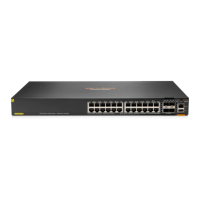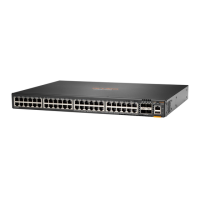101
a. Device A sends a proposal BPDU to Device B through Port A1.
b. Device B receives the proposal BPDU on Port B2. Port B2 is elected as the root port.
c. Device B blocks its designated port Port B1 and alternate port Port B3 to eliminate loops.
d. The root port Port B2 transits to the forwarding state and sends an agreement BPDU to
Device A.
e. The designated port Port A1 on Device A immediately transits to the forwarding state after
receiving the agreement BPDU.
Figure 35 P/A transition for RSTP and PVST
• P/A transition for MSTP.
In MSTP, an upstream bridge sets both the proposal and agreement flags in its BPDU. If a
downstream bridge receives the BPDU and its receiving port is elected as the root port, the
bridge blocks all the other ports except edge ports. The downstream bridge then replies an
agreement BPDU to the upstream bridge. The upstream port immediately transits to the
forwarding state upon receiving the agreement BPDU. If the upstream port does not receive the
agreement BPDU, it waits for twice the forward delay to transit to the forwarding state.
As shown in Figure 36, the P/A transition ope
rates as follows:
a. Device A sets the proposal and agreement flags in its BPDU and sends it to Device B
through Port A1.
b. Device B receives the BPDU. Port B1 of Device B is elected as the root port.
c. Device B then blocks all its ports except the edge ports.
d. The root port Port B1 of Device B transits to the forwarding state and sends an agreement
BPDU to Device A.
e. Port A1 of Device A immediately transits to the forwarding state upon receiving the
agreement BPDU.
Figure 36 P/A transition for MSTP

